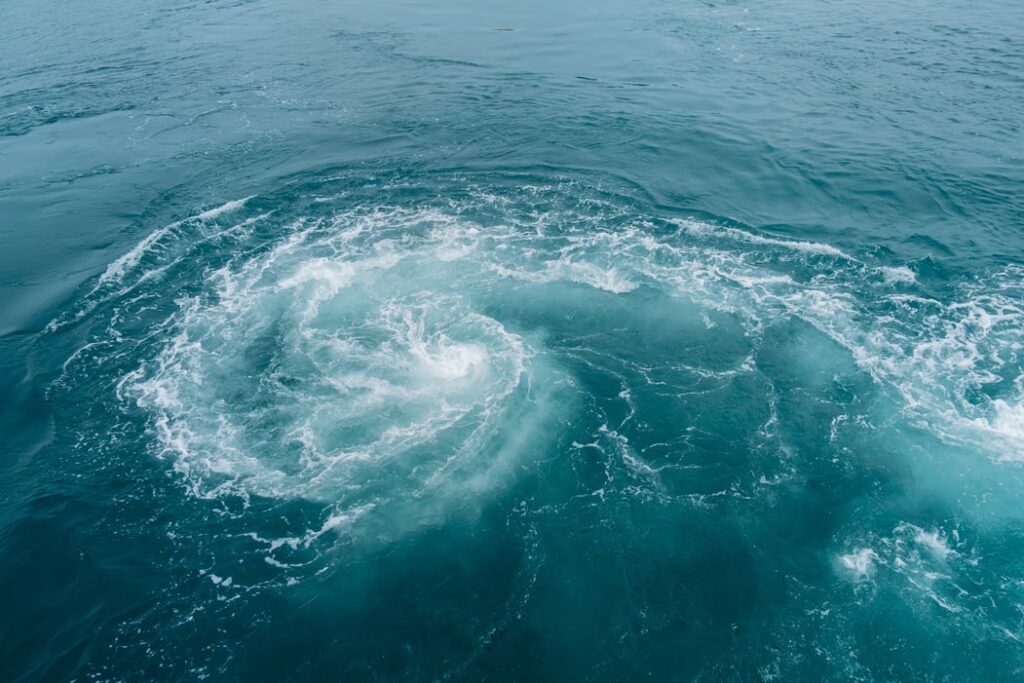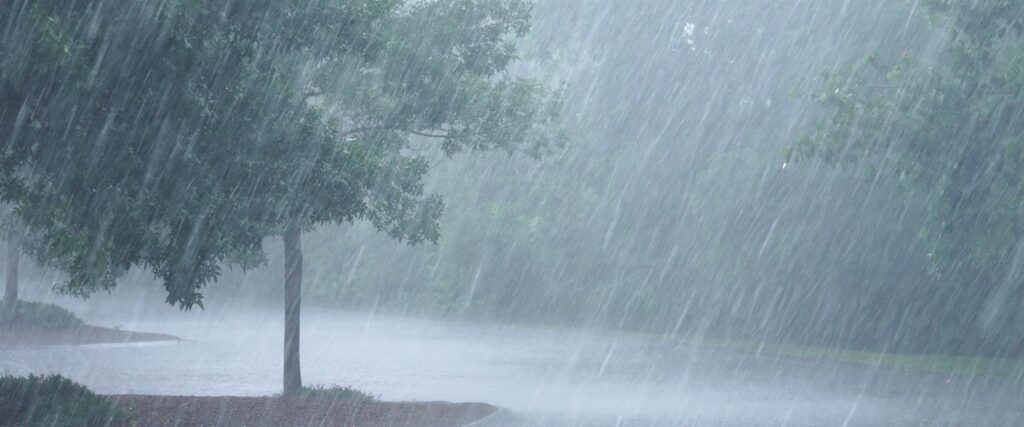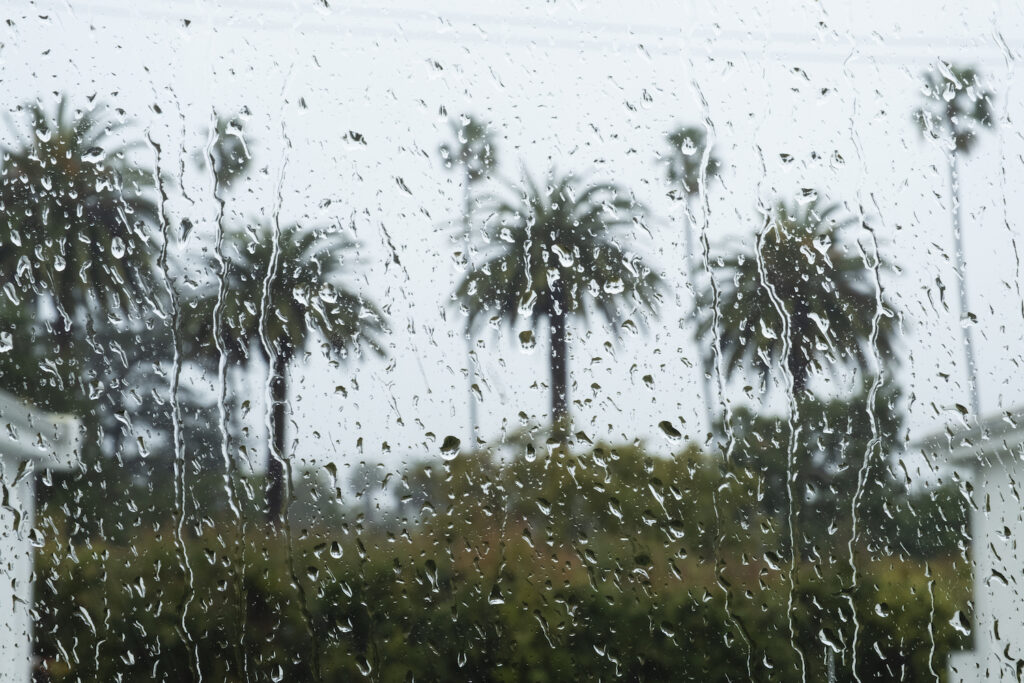A hurricane has hit Florida and we are meant to regard it as at least the fourth seal, maybe the sixth. Under the fairly sober headline “Idalia expected to hit Florida as major Category 3 hurricane” NBC prophesied that “The storm could bring ‘life-threatening storm surge, hurricane force winds and flooding’ along parts of the west coast of Florida and the Florida Panhandle as early as Tuesday, forecasters warned.” Could. But didn’t. Idalia reached Category 3 strength and then, well, petered out. As did the coverage, though reluctantly.
Heatmap Daily was all for Idalia as major disaster: “Some 20 million Americans woke up on Monday to the news that they have just one full day to prepare for Tropical Storm Idalia, which is expected to strengthen into the first major U.S. hurricane of the season this week.” Surely the big news was not that a hurricane was coming but that it’s the first one this year to hit the U.S. The article tried to hedge its bets with:
“Though climate change caused by human activities doesn’t increase the frequency of hurricanes, warmer oceans mean the ones that form tend to be more intense, slow, and destructive.”
So are they getting more common or not? To coin a phrase, it seems to depend which way the wind is currently blowing. It was howling in NBC’s studios, with “Idalia strengthens to a hurricane as Florida braces for a potentially life-threatening storm surge.” The New York Times, along with a helpful “How to track a hurricane“ that Heatmap might want to read, went with “The storm intensified into a hurricane early Tuesday in the Gulf of Mexico. Evacuations were underway in Florida as dangerous winds approached”. That one was on the email they sent on August 29; the actual news story had a different and less scary headline though it did quote the mayor of Cedar Key that:
“This storm is worse than we’ve ever seen. My family has been here for many generations. We haven’t seen a storm this bad, ever.”
Which might happen to be true of Cedar Key but in terms of Florida generally is bunk. As Wikipedia says:
“The List of Florida hurricanes encompasses approximately 500 tropical or subtropical cyclones that affected the state of Florida. More storms hit Florida than any other U.S. state, and since 1851 only eighteen hurricane seasons passed without a known storm impacting the state. Collectively, cyclones that hit the region have resulted in over 10,000 deaths, most of which occurred prior to the start of hurricane hunter flights in 1943.”
Oddly, it adds that:
“The strongest tropical cyclone to make landfall on the state was the 1935 Labor Day hurricane, which crossed the Florida Keys with a pressure of 892 mbar (hPa; 26.35 inHg); it is also the strongest hurricane on record to strike the United States.”
And as recently as 2018 Hurricane Michael hit as a Category 5 storm. Proof of climate-induced weather disaster? Well, not really, as it was “the first Category 5 hurricane to hit the United States since Hurricane Andrew in 1992” and not as strong as the 1935 Labor Day one. Almost as if Florida always had some mighty bad weather but nothing out of the scarily ordinary recently.
Knowing such things, alas, requires having Google on your computer, which journalists seem not to in this era of cutbacks… or climate zealotry.
Ryan Maue contributed the thought that:
“Wind shear kept Idalia from organizing an inner-core and rapidly intensifying over the very warm waters of the NW Caribbean – perhaps the most favorable location for a hurricane to explosively intensify on the planet. e.g. Wilma 2005, Gilbert 1988.”
1988? Warm waters? What’s that about? Aren’t the oceans boiling now, having been pleasantly cool until all our carbon “pollution” lit the stove?
NBC’s August 30 “Hurricane Idalia intensifies to major Category 4 storm” was by August 31 merely “Tropical Storm Idalia moving over South Carolina” with the subhed “Idalia made landfall in Florida’s Big Bend near Keaton Beach as a Category 3 hurricane just before 8 a.m. ET.” And the Times’ August 30 “The Morning” emailed “The Morning: A Category 4 hurricane approaches” had subsided to “Idalia’s Landfall” although mayhem and death were still in the offing:
“Officials issued evacuation orders in counties across West and Central Florida, and governors in Georgia and the Carolinas declared states of emergency because of concerns about heavy rains and potential tornadoes. More than half of Florida’s western coastline is at risk of life-threatening storm surges, as rising ocean water floods towns.”
We are all going to die. Noah get busy. And it’s all our fault, NBC hollered:
“How Hurricane Idalia went from Category 1 to Category 4 overnight/ Warmer oceans in recent years have provided the energy for hurricanes to rapidly intensify, a phenomenon that is likely to be more common in a warming climate.”
Some disaster this is turning out to be. Worst hurricane since 1857 in Big Bend, Florida. Ooooooo! Also “Before Idalia, no major hurricanes on record had ever passed through the bay abutting the Big Bend”, and a storm surge of… eight feet not sixteen. And “Idalia Brings Surge of Seawater, but Less Damage Than Feared”. Thousands not killed.
The New York Times on August 30 admitted that actually it was weakening. But doom still loomed:
“Idalia made landfall on Florida’s Gulf Coast as a Category 3 hurricane, with 125 mile-per-hour winds and life-threatening storm surges.”
Or not; the actual news story was dialed back by August 31 to “Tropical Storm Idalia Storm and Tide Inundate South Carolina Coast/ Idalia brought surging water into Charleston, S.C. before heading toward North Carolina.” With “its maximum wind speeds having slowed to 60 miles per hour.” Boooring.
Ultimately the apocalypse was down to “Watch as cameras captured the moment strong winds damaged a billboard near NBC News’ Gabe Gutierrez, who was reporting on Hurricane Idalia’s powerful winds damaging Perry, Fla.” Not to mention (no, really) “Video shows the moment powerful winds from Hurricane Idalia topple a gas station awning in Perry, Fla.” Even though they were clinging to “Hurricane Idalia made landfall on Florida’s Gulf Coast with intense wind speeds and the threat of a dangerous storm surge.” And in that spirit, while admitting that Idalia had weakened even before reaching land, NBC did manage to find a body: “The hurricane destroyed homes and flooded coastal communities in Florida, and at least one death there, a car crash, was blamed on the weather, officials said.” Well, sure. How often does Florida have car crashes otherwise? (Answer: roughly 381,000 times a year, with over 3,000 fatalities. But who’s counting?)
The Associated Press was still blowing at gale force on August 30, with a widely-reprinted story insisting that:
“Hurricane Idalia made landfall Wednesday in Florida as a Category 3 storm and unleashed devastation along a wide stretch of the Gulf Coast, submerging homes and vehicles, turning streets into rivers, unmooring small boats and downing power lines in an area that has never before received such a pummeling.”
Never is a big word. Like ever. And as noted it’s cherry-picking, in a state that seems to attract hurricanes as campers attract mosquitoes in the Okefenokee Swamp, to pick one very small part of a state that’s seen far worse pummelings in the last five years and call it “an area that has never before” blah blah blah. But all that rubbish about life-threatening and historic was just that, the usual alarmist hype that will be reprinted almost verbatim the next time a typical storm hits a typical area yet again as proof of “climate change”.
P.S. After the water had settled, Heatmap predicted that “Hurricane Idalia marks the beginning of what NOAA is predicting will be an ‘above-average’ hurricane season”. Yeah. Unless it isn’t.
P.P.S. Another Heatmap item tried to tell us private insurers were fleeing Florida because of bad weather, leaving only a government firm that was going to wallop people with compulsory premiums after taking insane risks insuring properties in the path of obvious bad weather that’s been sweeping through regularly since records began, though even it admits that a lack of legal reform around litigation is what’s really driving companies out, yet another case of government failure blamed on climate.



The letter sent by 1,600 climate scientists regarding the approach taken by the political powers that be, should cause much more than a brief hesitation in policy. The science-based observation and real-world physics is by now pretty well accepted by the average person of average intellect. Critical thinking and basic common sense, scarce in government circles, is finally pushing through the media barriers and reaching the common man. The letter itself should give pause to those who tend to believe everything they hear on TV and when personal observation of the policies and actual climate conditions can be compared to the climate models and actions proposed by our Brain-Dead leaders it becomes almost impossible to believe there is any reason for concern at all.
It's time to encourage those who still believe that CO2 is our nemesis to take a breath and let their limited critical thinking skills prevail.
Government Solutions to AGW/CCC: The cures will be worse than the disease.
The fear mongering commonly embraced by the media is counterproductive. Crying wolf causes people to ignore real dangers. I recognize that the officials are in a tough place because they must not underestimate the danger and must err on the side of caution. But those of us who have homes in Florida are always skeptical of the fear mongering. Prepare fully and watch carefully. Last year's Cat 1 that hit us was powerful enough to cause concern and respect for the power of the storm, but no real damage resulted. Any stronger and I'd be happier to evacuate. Thanks to the weather trackers for their diligence!
What do you get when you have no hurricanes hitting the South Eastern US as happened a few years ago? Y have a severe drought.
I don’t understand how the experts can include cyclone, tropical storm and hurricane all in one paragraph.